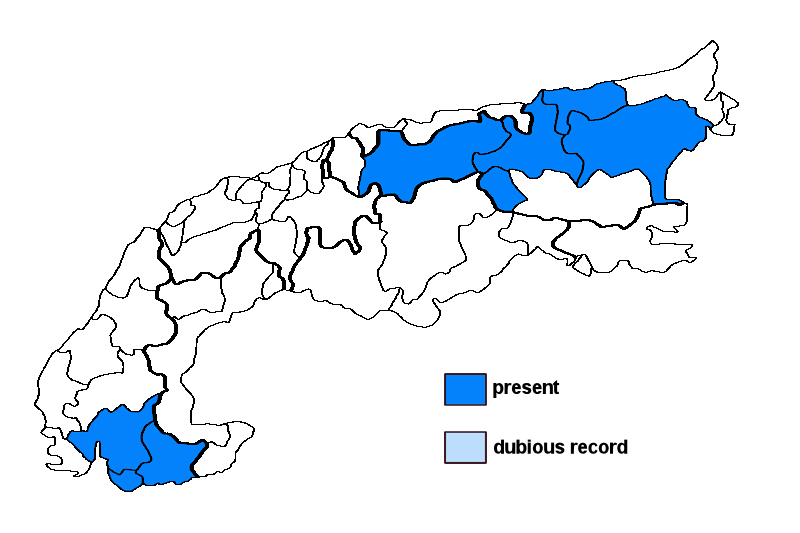Placynthium baumgartneri (Zahlbr.) Gyeln.
Syn.: Placynthium coerulescens (Harm.) Gyeln., Pterygium baumgartneri Zahlbr., Pterygium coerulescens Harm.
Lichenised.
Substrate: calciferous rocks,
Altitudinal range: from the submediterranean/colline belt (potential vegetation: mixed deciduous forests dominated by Quercus and Carpinus) to the alpine belt (potential vegetation: treeless Alpine grasslands and tundras, to the lower limit of perennial snow and the equilibrium line of glaciers)
Note: a species with an effigurate thallus lacking a prothallus, the areoles in the centre often falling off and the marginal lobes in dense radial arrangement, flat, brownish with a greyish pruina, sessile black apothecia, and 3-septate ascospores; on steep faces of calcareous rocks; known from Southern and Central Europe, with several records from Austria and France (paratype of P. coerulescens), perhaps overlooked elsewhere, or misidentified as P. subradiatum.
Austria: Tirol; Salzburg; Steiermark; Oberösterreich; France: Alpes-de-Haute-Provence; Alpes-Maritimes; Var;





